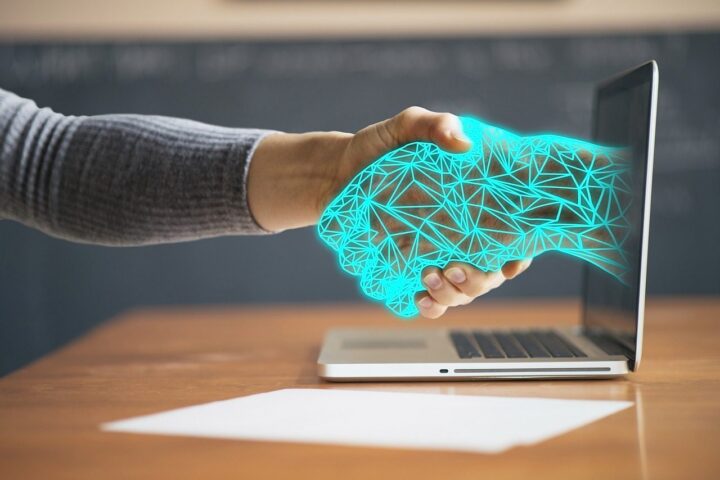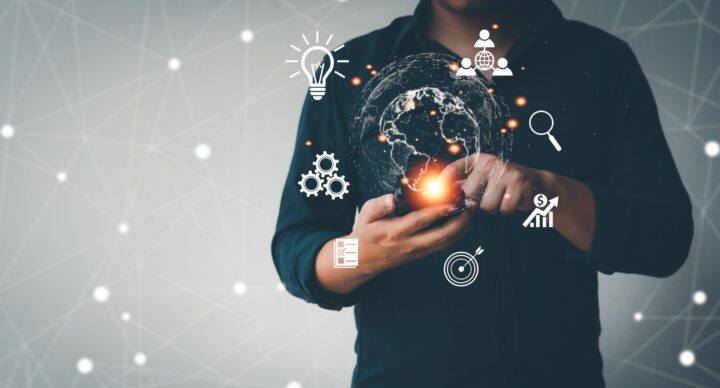The Power of Artificial Intelligence, often abbreviated as AI, has become a buzzword in recent years, captivating the imagination of both technophobes and the public. But what exactly is AI, how does it work, and how can it change the world? In this comprehensive exploration, we will delve deep into the realms of AI, breaking down its intricacies and examining its profound impact on various sectors of our modern world.
What is Artificial Intelligence?
At its core, Artificial Intelligence refers to the simulation of human intelligence in machines, allowing them to perform tasks that typically require human intelligence. These tasks encompass a wide range of activities, from basic pattern recognition to complex decision-making. AI systems are designed to analyze data, learn from it, and make predictions or decisions based on that learning.
Types of AI
AI can be categorized into two main types:
- Narrow or Weak AI (ANI): This type of AI is designed for a specific task. It excels at performing that task but lacks general intelligence. Examples of narrow AI include voice assistants like Siri, recommendation systems on streaming platforms, and chatbots.
- General or Strong AI (AGI): AGI represents machines with human-like intelligence. These systems can understand, learn, and apply knowledge across a wide range of tasks, just like a human being. However, true AGI remains a theoretical concept and has not been achieved yet.

How Does AI Work?
AI systems rely on data and algorithms to function. Here’s a simplified breakdown of the AI workflow:
- Data Collection: AI systems require vast amounts of data to learn from. This data can be structured (like databases) or unstructured (like text, images, or videos).
- Data Preprocessing: Raw data often contains noise and irrelevant information. Preprocessing involves cleaning and organizing the data to make it suitable for analysis.
- Feature Extraction: Features are specific attributes or characteristics of the data that the AI system uses for analysis. For instance, in image recognition, features might include shapes, colors, and textures.
- Algorithm Selection: The choice of algorithm depends on the task at hand. For instance, neural networks are commonly used for deep learning tasks, while decision trees are used for classification problems.
- Training: This is a critical step where the AI model learns from the data. It involves adjusting the model’s parameters to minimize errors and make accurate predictions.
- Testing and Validation: After training, the model is tested with new data to ensure it can generalize its learning and make accurate predictions outside of the training dataset.
- Deployment: Once the model performs well, it’s deployed for real-world use. This could be in the form of a recommendation system, a self-driving car, or a medical diagnostic tool.
- Continuous Learning: AI systems can continue to learn and adapt as they encounter new data. This is especially true for machine learning models that use techniques like reinforcement learning.

How Can AI Change the World?
AI has the potential to revolutionize various aspects of our lives, ushering in transformative changes in many sectors. Let’s explore some of the ways AI is poised to reshape the world:
- Healthcare: AI can analyze medical data, detect diseases, and assist in treatment planning. Radiology and pathology benefit from AI in image analysis for early disease detection. Chatbots and virtual nurses provide patient support and monitor health conditions.
- Education: Personalized learning powered by AI can cater to individual student needs. AI-driven chatbots can offer instant tutoring or answer questions, enhancing the learning experience. Additionally, AI can automate administrative tasks for educators.
- Finance: AI is used for fraud detection, algorithmic trading, and customer service chatbots in the financial sector. It can also analyze vast datasets to identify investment opportunities and risks.
- Manufacturing: The use of AI-powered robots and automation in manufacturing improves efficiency and reduces errors. Predictive maintenance using AI helps prevent costly equipment breakdowns.
- Transportation: Self-driving cars and trucks are a prime example of AI’s impact on transportation. AI systems also optimize traffic management, reducing congestion and energy consumption.
- Entertainment: AI algorithms power content recommendation systems on streaming platforms, increasing user engagement. Additionally, AI-generated music and art are gaining popularity.
- Retail: AI-driven recommendation engines suggest products to customers based on their browsing and purchasing history. Inventory management and supply chain optimization are also enhanced by AI.
- Environmental Conservation: AI is used in monitoring and managing environmental resources. For instance, it helps in tracking wildlife populations, predicting climate changes, and optimizing energy consumption.
- Agriculture: AI-driven precision farming techniques improve crop yield and reduce resource wastage. Drones equipped with AI can monitor crop health and detect diseases early.
- Cybersecurity: AI is employed to detect and mitigate cyber threats in real time. It can identify unusual patterns of behavior and prevent security breaches.
- Space Exploration: AI plays a crucial role in autonomous spacecraft navigation, data analysis from space missions, and even the search for extraterrestrial life.
- Language Translation: AI-powered language translation services enable seamless communication across linguistic boundaries, fostering global connectivity.
- Social Services: AI can assist in social services by automating administrative tasks, enhancing the efficiency of government operations, and improving the delivery of public services.
- Personal Assistants: Virtual personal assistants like Siri, Alexa, and Google Assistant help users with tasks such as setting reminders, answering questions, and controlling smart home devices.
- Research and Development: AI accelerates scientific research by analyzing complex datasets, simulating experiments, and discovering patterns that humans might miss.

Sectors of AI in Today’s World
Now that we’ve explored how AI can change the world, let’s delve deeper into the sectors where AI is actively used in today’s world:
- Machine Learning and Deep Learning:
- Natural Language Processing (NLP): NLP is used in chatbots, sentiment analysis, language translation, and text summarization.
- Computer Vision: AI powers image and video analysis, facial recognition, autonomous vehicles, and medical image analysis.
- Reinforcement Learning: Used in robotics, game playing, and autonomous systems.
- Healthcare:
- Medical Imaging: AI assists radiologists in diagnosing diseases from medical images like X-rays and MRIs.
- Drug Discovery: AI accelerates drug development by predicting molecular interactions and simulating experiments.
- Telemedicine: Virtual health assistants and remote monitoring improve healthcare accessibility.
- Finance:
- Algorithmic Trading: AI algorithms make high-frequency trading decisions.
- Credit Scoring: AI assesses creditworthiness by analyzing financial and personal data.
- Fraud Detection: AI identifies fraudulent transactions by spotting unusual patterns.
- Retail:
- Recommendation Systems: AI suggests products based on user behavior and preferences.
- Inventory Management: AI optimizes stock levels and supply chain operations.
- Cashier-less Stores: AI enables cashier-free shopping experiences.
- Transportation:
- Self-Driving Vehicles: AI is at the heart of autonomous cars and drones.
- Route Optimization: AI optimizes logistics and reduces fuel consumption.
- Traffic Management: AI manages traffic flow and reduces congestion.
- Education:
- Personalized Learning: AI tailors educational content to individual student needs.
- Automated Grading: AI grades assignments and provides instant feedback.
- Language Learning: AI-powered apps assist in language acquisition.
- Manufacturing:
- Robotics: AI-powered robots automate assembly lines and perform precision tasks.
- Quality Control: AI detects defects in real time during manufacturing.
- Predictive Maintenance: AI prevents equipment failures by analyzing sensor data.
- Entertainment:
- Content Recommendation: AI suggests movies, shows, and music to users.
- Video Game AI: AI controls non-player characters (NPCs) and enhances game realism.
- Art Generation: AI creates visual and auditory art pieces.
- Agriculture:
- Precision Farming: AI optimizes irrigation, fertilization, and pest control.
- Crop Monitoring: Drones equipped with AI monitor crop health and growth.
- Livestock Management: AI tracks animal health and behavior.
- Cybersecurity:
- Threat Detection: AI identifies and mitigates cyber threats in real-time.
- Anomaly Detection: AI spots unusual behavior patterns indicating potential attacks.
- User Authentication: AI enhances biometric and behavioral authentication systems.
- Space Exploration:
- Autonomous Navigation: AI guides spacecraft during complex maneuvers.
- Data Analysis: AI analyzes vast amounts of data from space missions.
- Exoplanet Discovery: AI identifies exoplanets in astronomical data.
- Language Translation:
- Neural Machine Translation: AI-powered translation tools provide accurate language conversion.
- Real-Time Translation: AI enables instantaneous spoken language translation.
- Social Services:
- Automated Administrative Tasks: AI streamlines administrative processes.
- Fraud Prevention: AI detects fraudulent activities in social service programs.
- Resource Allocation: AI optimizes resource distribution in public services.
In conclusion, Artificial Intelligence is not just a technological marvel; it’s a transformative force that has the potential to redefine how we live, work, and interact with the world around us. With applications spanning numerous sectors, AI is driving innovation, enhancing efficiency, and solving complex challenges. As AI continues to evolve, its impact on society will undoubtedly be profound, shaping a future that was once only the realm of science fiction. Embracing the power of AI responsibly and ethically is essential as we navigate this exciting new era of technological advancement.
